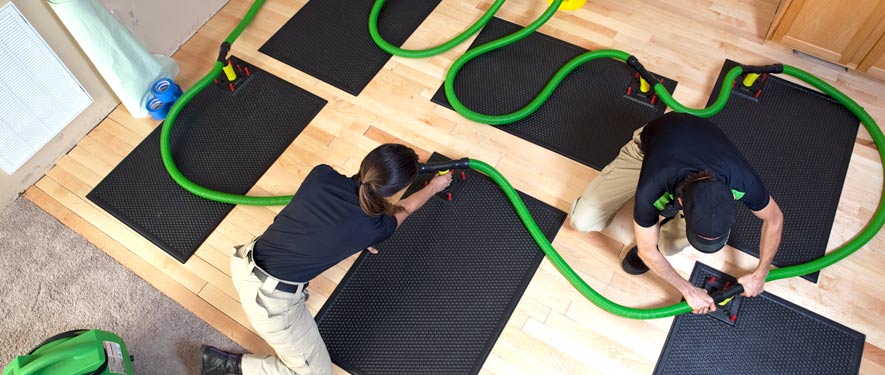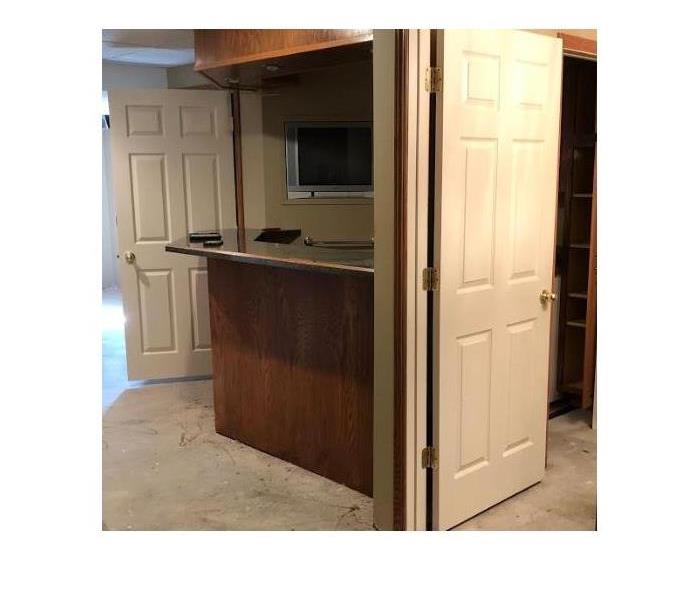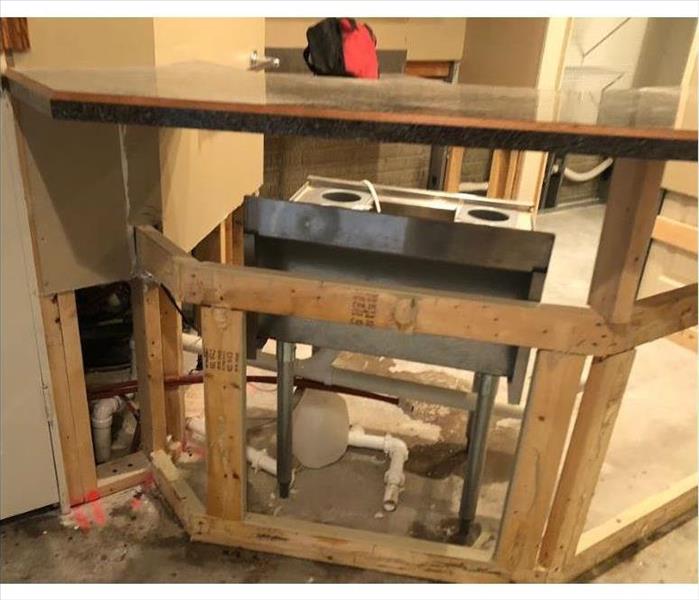
Step 4: Drying and Dehumidification
Our Water Damage Restoration Process
Once the excess water has been removed, the floors and walls may appear dry, but a quick inspection will reveal they are wet to the touch. Nearly all building materials, like wood, drywall, and flooring materials, are porous and therefore retain water. This retained water can cause the materials to break down, warp, or cause mold damage, potentially leading to a toxic environment inside your home or commercial building and/or permanent structural damage.
Water damage is one of the most common causes of home insurance claims. Claims due to water damage impacts 1 in 50 homeowners each year,most have filed a claim due to water damage. On top of that, annual water claims with a cost of more than $500,000 are now doubled, and those costing more than $1,000,000 have tripled. One of the biggest reasons for this rise in water damage claims is an increase in failed plumbing equipment in older homes.
Without the proper tools and know-how, water damage restoration can be next to impossible. Because water damage can lead to far more serious issues like mold and structural damage in no time, your best bet is to call the pros at the very first sign of water damage. The water damage restoration experts at SERVPRO of Denver West use highly specialized equipment to dry and dehumidify areas that have been affected by water damage.
Drying / Dehumidification
Our Professionals will use room measurements, temperature, and relative humidity to determine the optimal number of air movers and dehumidifiers to dry your home or business. We’ll carefully monitor the progress using moisture meters until the materials return to acceptable drying goals.
- Use Dehumidification Equipment
- Use Monitoring Equipment to Track Progress
Monitor Floor and Walls
We check the moisture levels to monitor the drying process.
- Monitor Floors
- Monitor Walls
Drying Equipment
- Industrial-grade dehumidifiers help prevent secondary water damage like swelling and warping of floors, walls, and furniture.
- High-speed air movers create airflow across walls, carpets, pads, and furniture, which accelerates the evaporation of moisture.






 24/7 Emergency Service
24/7 Emergency Service




